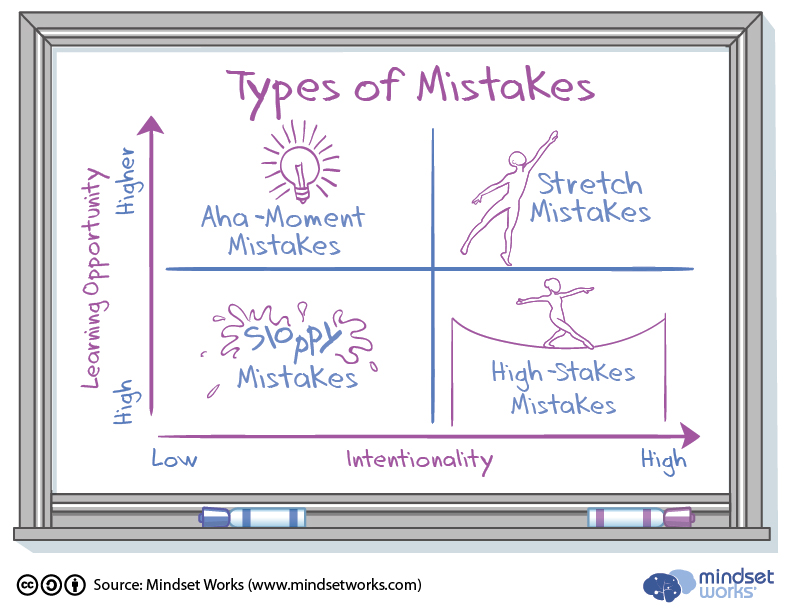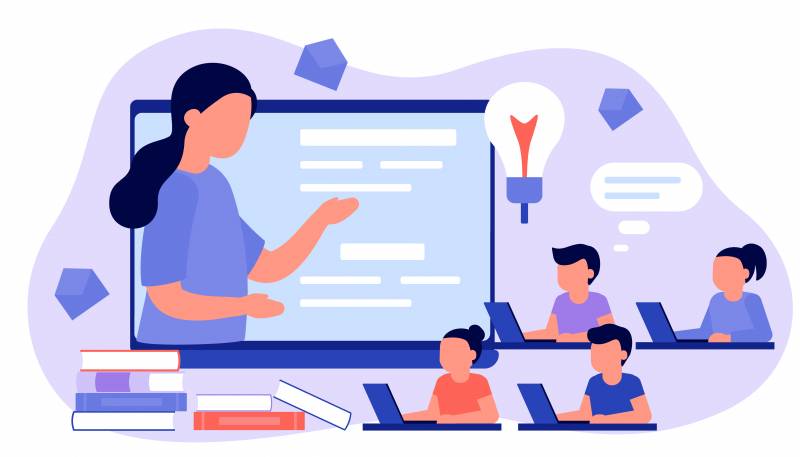Mistakes are not the only things that vary. The impact changes too. “It’s not just that our mistakes affect us differently because of where we stand in the world, but also that our mistakes affect students differently because of their identities,” Cruz explains in her book. There are some mistakes where the impact can be so harmful to kids that adults should establish “zero-fail missions” to make sure failure is unlikely to occur. Teaching students to read and having students see themselves in their curriculum are important research-backed zero-fail missions, Cruz says.
“We have a habit of picking the wrong zero fail missions that are often based on tradition and belief, and not fact.” Once a “zero-fail mission” is identified, she recommends identifying potential obstacles and upholding rigorous prioritization to make sure that goals are met.
How grades can create a class culture based on “failure-rich” learning
Grading systems both penalize learners who make mistakes and limit high achieving students. However, there are alternative assessment tools teachers can use to help students feel more comfortable with error. “I would give students a kid version of a report card and ask them to assess themselves. Then, I would make an assessment,” says Cruz. “And if I was sitting with a [student] who had a different assessment of themselves than what I thought, I would have a conference with them and try to figure out why we saw it differently.”
During the pandemic, grading has become even more complex and contentious with many students receiving failing grades in academic subjects. “What we say grading is, which is a communication system, is different from what it ends up being, which is a merit system,” says Cruz. “Those systems come with advantages for people who come to school with certain kinds of privileges, whether it's prior knowledge, full bellies, great Internet access or wonderful devices.” She recommends responding to learners who are not performing well with compassion. Teachers should make efforts to touch base with struggling students or call their caregivers to find out more about any obstacles to learning.
Debunking the teacher martyr trope
Teachers often fall into or are steered towards the savior-martyr stereotype, says Cruz. “The teacher archetype is basically working to the bone all hours of the night for a pittance.”
At first glance, that may seem like an asset. School closures and distance learning have created the conditions where teacher martyrdom seems more likely than ever before. However, she points out teachers are more likely to make mistakes when they haven’t taken care of their personal needs. And when teachers overcommit and overexert themselves, they are missing a valuable opportunity to show students that it is okay to prioritize self care.
Instead, try setting boundaries to delineate personal time from teacher time. It can be as simple as preserving the sanctity of lunchtime. High school educator Kelly Gallagher recalls that his classroom used to be open for students to have lunch. “I got to a point in my career when I said, ‘Nope. I’m going to have lunch with adults and I’m going to talk about things that we wouldn’t talk about in a classroom full of kids.’”
Stepping away from the classroom – which for some educators is currently the computer – can actually benefit educators’ teaching practices. “I think the best teacher planning is going to the museum,” reveals New York-based middle school teacher Donna Santman, who encourages educators to pursue their own interests outside of school. And while educators can’t necessarily access public spaces in the same way these days, regular breaks could reduce the number of avoidable mistakes they make in the classroom and increase capacity for more creative and innovative classes.
Even apologizing can become a meaningful model to students
Being an authority figure in a classroom can make teachers feel as if they have to put their best face forward all the time, so most teachers’ first instinct is to cover up their mistakes as soon as possible. However, second grade teacher Connie Pertuz-Meza urges teachers to turn mistakes into teachable moments and turn classrooms into more mistake-friendly environments. “I always felt like if I made a mistake I needed to sweep it under the rug,” she says. “Students need to see the action of a teacher realizing and rewinding to say, ‘Oops, I made a mistake.’”
Cruz advises that teachers own up to the harmful impact of their actions regardless of whether their intentions were good. While admitting to errors is uncomfortable, it shows students how to take ownership over their actions and impact. It also communicates that students are valuable and worthy of the respect that a genuine apology requires.
“My first response used to be defense before, and now it is to assess the damage,” says Cruz, noting that a school-wide culture of mistake-making is most helpful when acknowledging and recovering from consequential mistakes. Unless schools make it explicit that mistake-making is welcome and expected, teachers will avoid the risks necessary to being adaptive teachers who are responsive to students’ needs.



